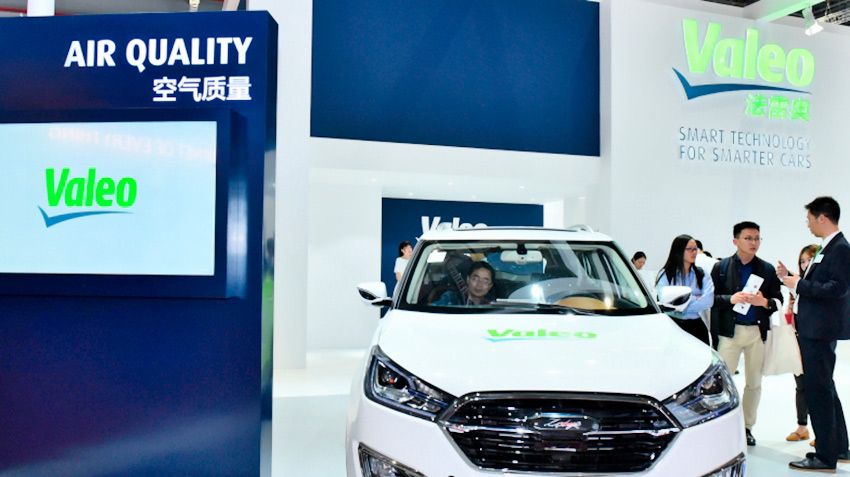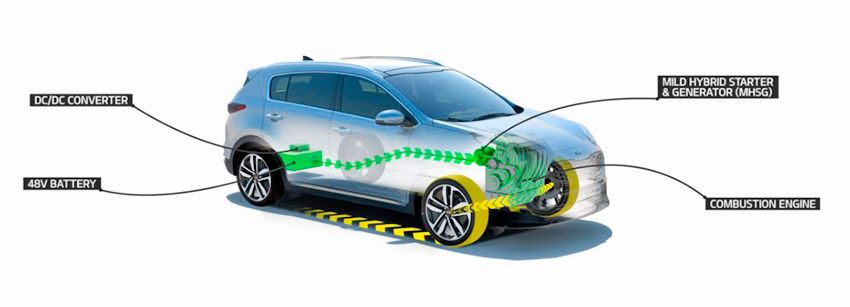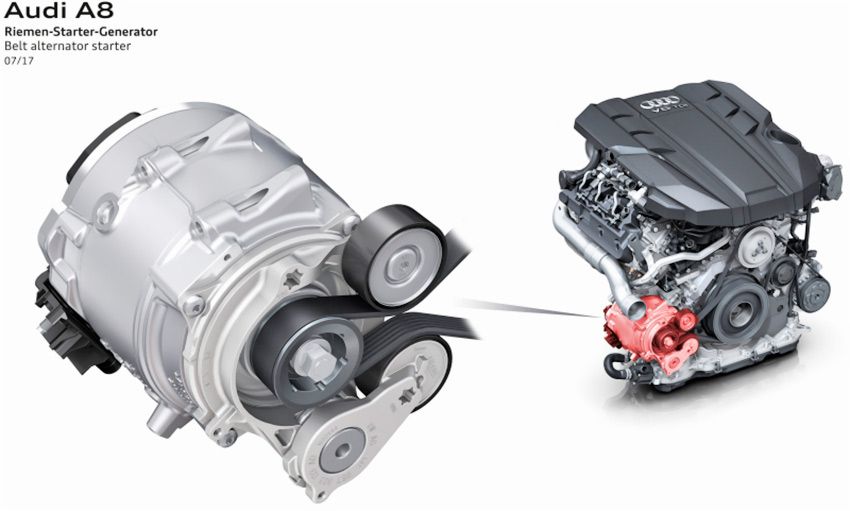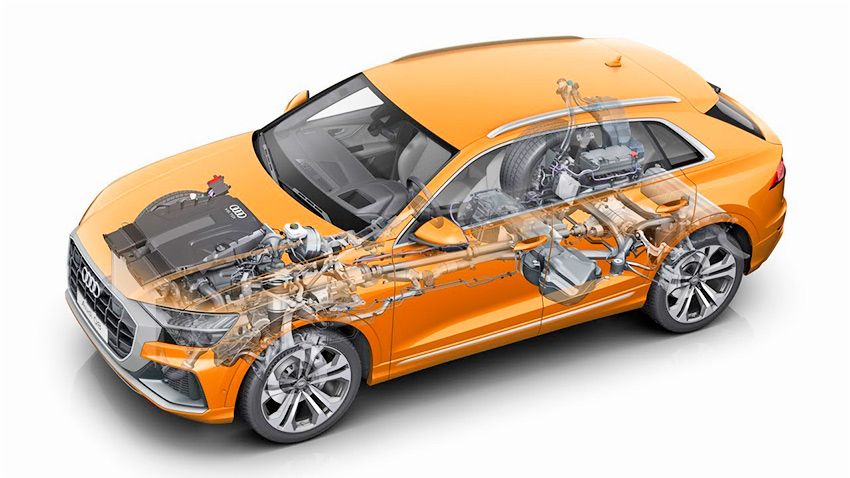Cars with 48-volt electrical system will successfully compete with PHEV and electric vehicles

14 May 2019
Traditional cars will get a second chance due to the transition to a 48-volt voltage and soft hybridity
Chinese commentator Yang Jian from Automotive News China believes the segment of vehicles with 48-volt power grid will surely progress and will compete with electric cars and hybrids at a cost.
Sales of electric cars in China are growing explosively, appeared and continue to appear hundreds of startups, and the Chinese government is pushing automakers to increase EV production using a program called "carbon credits".
However, "green" machines that flooded the world's largest automotive market in the foreseeable future will not be the current PHEV and BEV, and "mild hybrids" with cost effective technology based electrical systems with voltage: 48V.

The energy diagram of the MHEV on the example of the crossover KIA Sportage
Exactly 48-volt technology was most noticeable among the upcoming innovations, demonstrated last month at the motor show in Shanghai several major global manufacturers of components.Valeo is the first global supplier of components for 48-volt on-Board electrical systems in China (photo on the splash screen). The President of Valeo in China françois Marion in an interview with Automotive News China at the Shanghai auto show said, "the French company estimates the annual market share of vehicles equipped with such systems, 17% from sales of all new cars in China to 2023".
Marion also said: "the Company Valeo, and began to translate the 48-volt electrical system in 2017, plans by the end of 2023 to produce in China to 5 million 48-volt vehicles."
removing the incentive NEV on hand 48-volt mild hybrids
The main factor stimulating the use of 48-volt systems, are increasingly stringent standards for fuel economy and emission control in China.
Beijing requires automakers to reduce by 2020 the average fuel consumption by each of them the model lineup to 5 liters per 100 kilometers (47 mpg) against 6 liters (39 mpg) in 2016. By 2025, automakers will have to further reduce fuel consumption under 4 liters per 100 kilometers (58,8 miles per gallon).

The main component of the 48-volt system MHEV – reinforced starter-generator, allowing to recuperate braking energy and to increase the efficiency of the motor by 15-20%
Already today the 48-volt system has proven that they are the best solution to meet the requirements of prospective regulations.According to suppliers, the introduction of a combination of fuel-saving technologies such as start-stop, mild hybrids (heavy-duty generators operating in a regenerative mode to recharge the battery is increased), and turbo-compressors with electric drive based on the system voltage of 48V will allow automakers to improve fuel economy by 10-20%.
Such systems are even and profitability. They allow manufacturers to improve existing powertrain at a reasonable price and not expensive to develop a diesel-electric hybrid propulsion system for a rechargeable hybrids, PHEV and BEV battery.
However, most electrical components of a modern car, such as lights, media system, climate control, power Windows, wipers, and even the power steering will continue to operate at the voltage of 12V. 48V system will allow the components, increased electrical power.
"The advantage of the cost of vehicles with 48-volt systems on electric vehicles will become more visible in the future," said Sanming GU, chief technology officer of Valeo.
After the reduction of subsidies for all NEV more than 50% in March this year, Beijing plans to minimize the program to stimulate them by the end of the year.
So si thinks: "It will make the 48-volt system, more competitive cost".

One example of an MHEV on the model Audi Q8
"a Transition technology"Worldwide the automotive industry is beginning the transition from conventional cars with internal combustion engines (ICE) to plug-in hybrids and pure electric vehicles (PEV).
CEO of German supplier Hella Rolf Breidenbach, during a media briefing at the Shanghai motor show expressed concern: "Modern brands can not in a short period to rebuild its product line with ICE to PEV due to the high cost and lack of sufficient infrastructure charging. In addition to the shortage of time, automakers need transitional technologies to complete transformation of its products. Because the 48-volt solutions make traditional cars with internal combustion engines much more economical, we see them as a sort of technological bridge between the technology of yesterday and the future".
Like Marion from Valeo, Breidenbach also foresees a huge potential demand for 48-volt system in China.
Breidenbach also said: "Our customers are investing heavily in this technology and many new products. Therefore, in the next 10 years we will see a huge increase business opportunities for 48-volt solutions."
Promising for China, consider 48-volt systems Valeo and Hella, but other major global components suppliers, including Continental, Bosch and Delphi, which are also developing similar systems.
This probably means that, despite the desire of Beijing to the electrification of vehicles "green" cars that, most likely, we will see on Chinese roads in a few years, there are still cars, albeit with a 48-volt electrical systems (T.E. "mild hybrids" – ed.) but not a pure BEV..
|
|
|
Element was not found.








